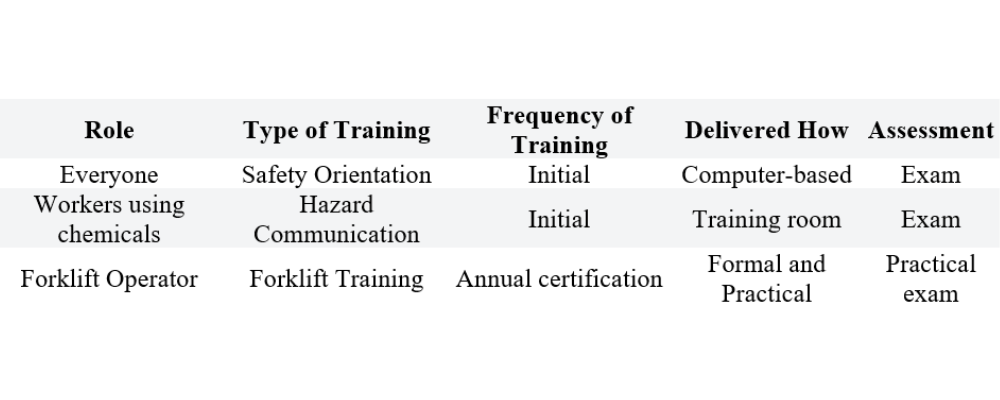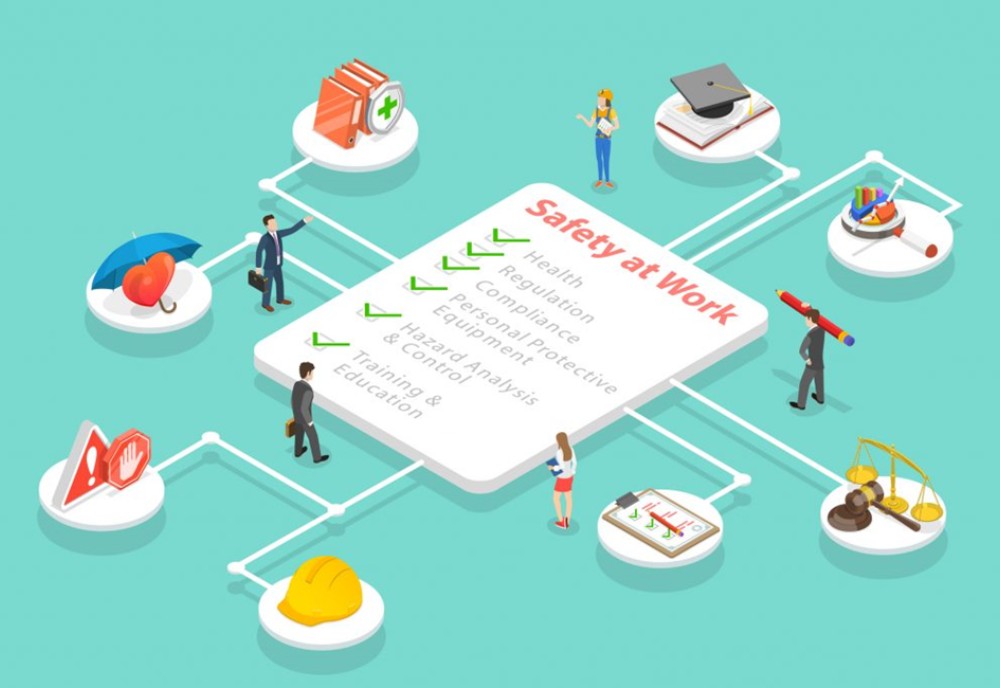In the previous three (3) parts of this series, we covered Management Leadership, Worker Participation, Hazard Identification and Assessment, and Hazard Prevention and Control.
Today we’ll address Education, Training, and Continuous Improvement elements. Education and Training aim to ensure that all workers receive appropriate and effective training in a language and literacy level they understand to do their work safely before performing assigned tasks, changes in assigned tasks, and changes in the workplace. While the appropriateness of the training refers to how well it covers the potential hazards in the workplace and the controls needed for each job, its effectiveness refers to how well workers understand and behave to protect themselves and others from potential hazards. The training can be delivered through formal courses, on-the-job training, and mentoring. It can be assessed by how well employees, contractors, staffing agencies, and permanent, temporary, and seasonal hires apply the necessary knowledge and skills to do their work safely.
A training matrix can highlight the various job functions, types, and frequency of training and frequency needed. Then it’s simply a matter of execution.

The last element of the SHMS is Continuous Improvement, which refers to using lagging and leading indicators to monitor system performance and progress. The idea is to use indicators such as OSHA injury and illness data, workers’ compensation data, and industrial hygiene exposure assessments to set safety and health priorities. Considering that lagging indicators are reactive and do not provide information about the progress made in preventing workplace incidents, leading indicators, such as training accomplished, near misses, and safety observation, should be used to develop goals, objectives, and action items using the results of the analyses.
Finally, while most argue which element is most important, the truth is the system cannot function effectively as it is designed without each of its parts. Each part or element of the SHMS can affect its behavior or properties, and they are, in turn, independent and connected to other parts. No part or collection of parts has an independent effect on the system; all parts are interconnected. According to Dr. Russ Ackoff, the system as a whole cannot be divided or viewed as independent parts. Think of the automobile as a system whose basic principle is to carry passengers from one place to another; none of its parts, i.e., brakes, engine, exhaust, etc., can drive by itself. Similarly, the SHMS properties, while designed to improve the safety culture/climate of the organization, none of the aspects or parts can do this by itself.
If you are ready to take the next step toward Safety and Health, contact USF SafetyFlorida toll-free (866) 273-1105 or visit www.usfsafetyflorida.com. Our primary purpose here at USF SafetyFlorida is to help your business prevent work-related fatalities, injuries, and illnesses. We do that by emphasizing hazard identification and helping you to develop an effective SHMS.
